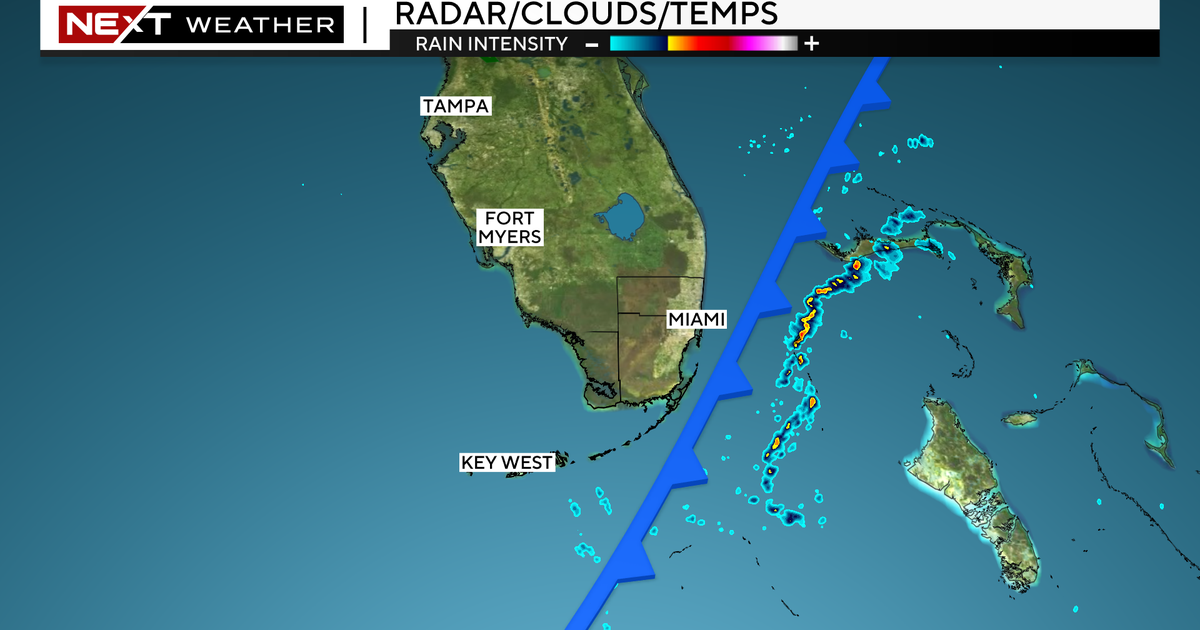New NOAA Forecast: 3 To 9 More Storms Highly Likely
CORAL GABLES (CBSMiami) — This year began with an unusual event: Alberto and Beryl both formed before the official start of the hurricane season (June 1). That has happened only two other times since the 1880s. Then, the Atlantic Ocean got busy, racking up another four named storms. An updated forecast released Thursday calls for the season to get even busier.
According to the new hurricane season outlook from the National Oceanic and Atmospheric Administration's (NOAA) Climate Prediction Center (CPC), the U.S. can still expect a 50 percent chance of a near-normal season. However, the chance of an above-normal season has increased to 35 percent.
Combined, this puts the chance for a near-normal or above-normal season at 85 percent. With six storms so far, that means an 85 percent chance of at least three to nine additional named storms before the hurricane season ends on November 30.
That should come as no surprise, according to Gerry Bell, Ph.D., lead seasonal hurricane forecaster at the CPC.
"Strong early-season activity is generally indicative of a more active season," says Bell.
Another reason the expected busy season shouldn't catch many by surprise is because it's only early August; hurricane season peaks between mid-August and late September:
Specifically, the August 9 NOAA forecast calls for:
- 12 to 17 named storms (top winds of 39 mph or higher), including:
- 5 to 8 hurricanes (top winds of 74 mph or higher), of which:
- 2 to 3 could be major hurricanes (Category 3, 4 or 5; winds of at least 111 mph)
The numbers are higher from the initial outlook in May, which called for 9-15 named storms, 4-8 hurricanes and 1-3 major hurricanes. Based on a 30-year average, a normal Atlantic hurricane season produces 12 named storms, six hurricanes, and three major hurricanes.
"We are increasing the likelihood of an above-normal season because storm-conducive wind patterns and warmer-than-normal sea surface temperatures are now in place in the Atlantic," said Gerry Bell, Ph.D., lead seasonal hurricane forecaster at the Climate Prediction Center. "These conditions are linked to the ongoing high-activity era for Atlantic hurricanes that began in 1995."
The warmer-than-normal sea surface temperatures are also linked to warmer-than-normal land temperatures during the first half of 2012, including the hottest July on record and the warmest March since 1895.
However, NOAA seasonal climate forecasters also announced today that El Niño will likely develop in August or September.
"El Niño is a competing factor, because it strengthens the vertical wind shear over the Atlantic, which suppresses storm development. However, we don't expect El Niño's influence until later in the season," Bell said.
"We have a long way to go until the end of the season, and we shouldn't let our guard down," said Laura Furgione, acting director of NOAA's National Weather Service.
"Hurricanes often bring dangerous inland flooding as we saw a year ago in the Northeast with Hurricane Irene and Tropical Storm Lee. Even people who live hundreds of miles from the coast need to remain vigilant through the remainder of the season," Furgione added.
"It is never too early to prepare for a hurricane," said Tim Manning, FEMA's deputy administrator for protection and national preparedness.
RELATED:
CBS4 Tropics Page, with an interactive tropical tracker and just-updated info on current tropical systems
Insurance Crisis Worsens for Hurricane Season 2012
Weather Channel's Rick Knabb Named New Hurricane Center Boss



